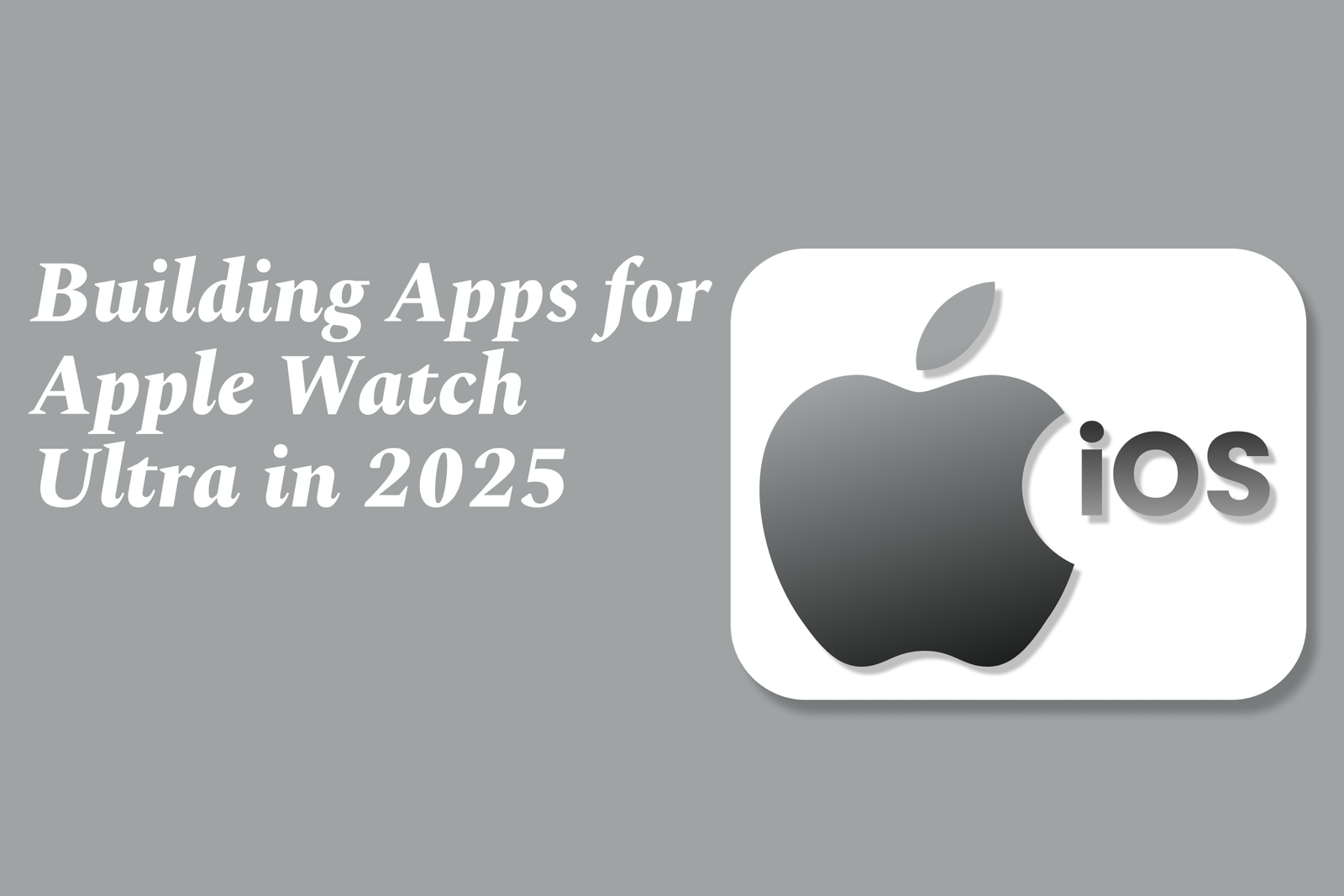Building Apps for Apple Watch Ultra in 2025
Building apps for Apple Watch Ultra in 2025 means creating optimized, user-friendly applications that leverage its advanced sensors, larger display, and improved battery. Developers focus on seamless performance, updated watchOS features, and strict compliance with App Store guidelines for a premium experience.
Building Apps for Apple Watch Ultra in 2025
1 ) Overview of the Apple Watch Ultra Ecosystem
The Apple Watch Ultra continues to dominate the premium smartwatch market in 2025. It features advanced hardware and software capabilities catered to fitness, health, and outdoor activities. Developers are focusing on leveraging these features to create immersive and tailored apps.
2 ) Key Development Considerations
Hardware Utilization: The Ultra model boasts enhanced sensors, better battery life, and a larger, more vibrant display. Apps should leverage these to offer real time health tracking, environmental data, and extended usage without battery drain.
Performance Optimization: Given the watch’s processing power, developers must optimize apps for smooth operation, balancing performance and energy efficiency.
User Interface (UI): The UI must conform to Apple’s latest design guidelines for watchOS 10+, ensuring intuitive navigation and accessibility on the Ultra’s larger screen.
3 ) Tools and Resources
Developers are encouraged to use the latest Apple Design Resources, including updated UI kits and icon templates for watchOS, ensuring pixel perfect app design tailored for the Ultra’s display. These resources are regularly updated in formats like Figma and Sketch as of mid 2025.
4 ) Platform Support and Compatibility
Applications must be compatible with watchOS 10 and above, targeting the Apple Watch Ultra’s hardware and software ecosystem. This includes support for new APIs related to health metrics, environmental awareness, and haptic feedback enhancements.
5 ) Age Rating and Policy Compliance
The App Store has introduced a more granular age rating system with new questions regarding sensitive content, in app controls, and medical or wellness topics. Developers need to carefully assess their apps against these guidelines to ensure proper age classifications.
6 ) Community and Ecosystem Connectivity
Active communities such as r/applewatchultra on Reddit provide developers and users a platform to discuss app ideas, best practices, and user experiences, fostering a vibrant ecosystem and feedback loop.
7 ) Design and Theming
Dark and light modes remain critical design aspects. Apps should adapt seamlessly to the user's preferred theme or system settings, providing a visually comfortable experience that complements the Ultra’s vivid display.
8 ) Distribution and Analytics
Developers should utilize Apple's established analytics and distribution channels, using tagged analytics regions and well structured navigation paths to maximize app visibility and user engagement on the App Store.
9 ) Future Trends and Updates
Innovation continues with watchOS updates, new developer tools, and expanding device capabilities. Staying updated with Apple Developer news and participating in beta releases will help developers optimize their apps for the evolving Apple Watch Ultra platform.
Summary:
Developing apps for the Apple Watch Ultra in 2025 involves harnessing its advanced hardware and software features, abiding by updated design and App Store policies, and engaging with an active developer community. Emphasis on optimized performance, user centric UI, comprehensive use of new APIs, and adherence to age ratings are essential for creating standout applications on this cutting edge device.
https://justacademy.in/news-detail/flutter-and-tensorflow-lite-examples
https://justacademy.in/news-detail/android-launchers-with-new-capabilities
https://justacademy.in/news-detail/android-device-manufacturer-announcements
https://justacademy.in/news-detail/react-native?s-new-accessibility-widgets-rock
https://justacademy.in/news-detail/android-updates-for-foldable-phones
Related Posts
Java supports GDPR and data privacy by enabling secure data handling through encryption, controlled access, and precise data management. It allows developers to minimize PII exposure, ensure data confidentiality, and design workflows that comply with data protection regulations effectively.
Java code quality tools have evolved to include advanced static analysis, integrated security checks, and AI-powered code reviews. These updates help developers detect bugs, enforce coding standards, and enhance security, streamlining the development process and improving overall code reliability.
Java remains a cornerstone in big tech companies, evolving with modern features like records, pattern matching, and virtual threads. Its robust ecosystem, enhanced performance, and growing AI integrations keep it vital for both legacy systems and innovative new projects.
Java and CI/CD pipeline optimizations streamline Java application development by automating builds, tests, and deployments. They improve efficiency through parallelization, caching, and secure secrets management, enabling faster feedback loops and more reliable, scalable software delivery.
Java supports modern cryptography standards through its flexible Java Cryptography Architecture (JCA), enabling integration of advanced algorithms like AES, EdDSA, and post-quantum tools. Libraries like Bouncy Castle offer FIPS-certified, hardware-accelerated implementations for secure development.
Java 23 enhances record patterns by enabling concise, direct destructuring of record components within pattern matching, simplifying type checks and data extraction. This improvement boosts code readability and expressiveness by reducing boilerplate in handling immutable data classes.
Java remains a top choice for mobile app backends, powering scalable, secure, and high-performance server-side solutions. Latest trends include cloud-native microservices, reactive programming, and enhanced JVM optimizations, enabling efficient, flexible, and robust mobile backend development.
Java SE 24 and LTS Java SE 21 offer enhanced features and performance, while Apache Spark 4.0.0 introduces Scala 2.13 support and advanced ML and SQL capabilities. Together, they empower developers to build scalable, high-performance data applications with modern tools.
JUnit 5 modernizes Java testing with a modular architecture, improved assertions, and seamless Java 8+ support. Beyond JUnit, tools like Mockito and AssertJ enhance mocking and assertions, creating a powerful, flexible ecosystem for writing clean, efficient Java unit tests.
Java plays a pivotal role in cloud automation tools by providing a robust, platform-independent language used to build scalable automation frameworks like Jenkins and Selenium, enabling efficient CI/CD pipelines, testing, and orchestration across diverse cloud environments.










